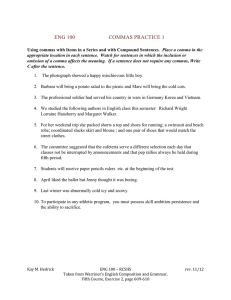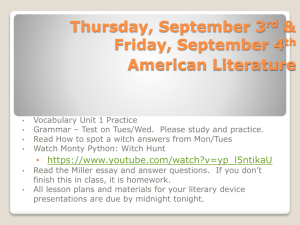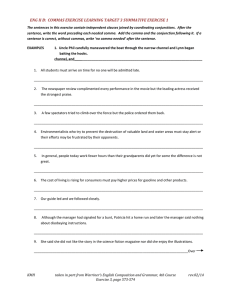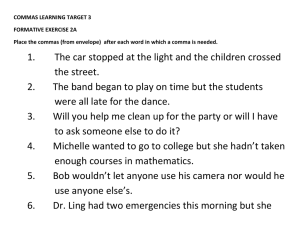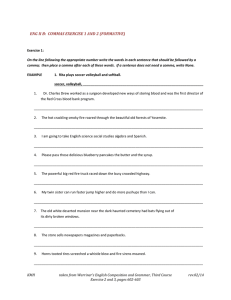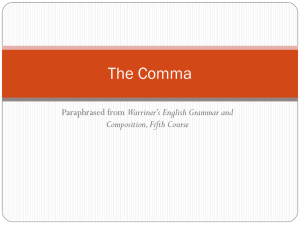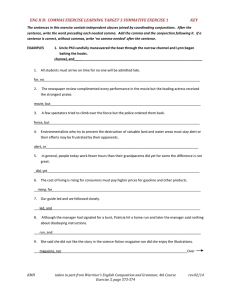Comma Usage: When to Avoid Commas
advertisement
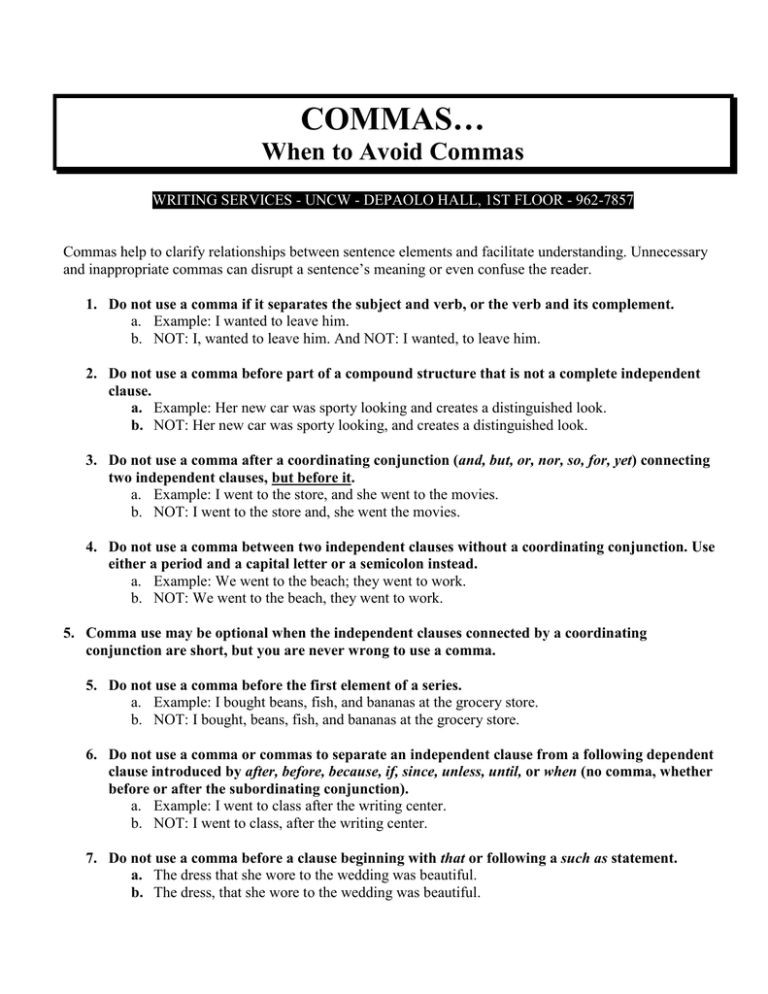
COMMAS… When to Avoid Commas WRITING SERVICES - UNCW - DEPAOLO HALL, 1ST FLOOR - 962-7857 Commas help to clarify relationships between sentence elements and facilitate understanding. Unnecessary and inappropriate commas can disrupt a sentence’s meaning or even confuse the reader. 1. Do not use a comma if it separates the subject and verb, or the verb and its complement. a. Example: I wanted to leave him. b. NOT: I, wanted to leave him. And NOT: I wanted, to leave him. 2. Do not use a comma before part of a compound structure that is not a complete independent clause. a. Example: Her new car was sporty looking and creates a distinguished look. b. NOT: Her new car was sporty looking, and creates a distinguished look. 3. Do not use a comma after a coordinating conjunction (and, but, or, nor, so, for, yet) connecting two independent clauses, but before it. a. Example: I went to the store, and she went to the movies. b. NOT: I went to the store and, she went the movies. 4. Do not use a comma between two independent clauses without a coordinating conjunction. Use either a period and a capital letter or a semicolon instead. a. Example: We went to the beach; they went to work. b. NOT: We went to the beach, they went to work. 5. Comma use may be optional when the independent clauses connected by a coordinating conjunction are short, but you are never wrong to use a comma. 5. Do not use a comma before the first element of a series. a. Example: I bought beans, fish, and bananas at the grocery store. b. NOT: I bought, beans, fish, and bananas at the grocery store. 6. Do not use a comma or commas to separate an independent clause from a following dependent clause introduced by after, before, because, if, since, unless, until, or when (no comma, whether before or after the subordinating conjunction). a. Example: I went to class after the writing center. b. NOT: I went to class, after the writing center. 7. Do not use a comma before a clause beginning with that or following a such as statement. a. The dress that she wore to the wedding was beautiful. b. The dress, that she wore to the wedding was beautiful. 8. Do not use a comma or commas to set off essential (restrictive) information. a. Example: The boy who broke the window is at the door. b. NOT: The boy, who broke the window, is at the door. 10. Do not use commas in years, street numbers, zip codes, telephone numbers, or page numbers. The following style guides and handbooks were consulted for this handout: Hacker, Diana. A Writer's Reference. 5th ed. Boston: Bedford/St. Martin's, 2003. 235-246. Kirkland, James W., and Collett B. Dilworth, Jr. Concise English Handbook. 3rd ed. Massachusetts: D.C. Heath and Company, 1994. 220-230. Lunsford, Andrea A. Easy Writer: A pocket guide. Boston: Bedford/St. Martin’s, 2002. 102-109. Lunsford, Andrea, and Robert Connors. The New St. Martin's Handbook. Boston: Bedford/St. Martin's, 1999. 351-367. Raimes, Ann. Pocket Keys for Writers. Boston: Houghton Mifflin, 2000. 148-151. By: Kerry Molessa Updated by: Bethany Tap
